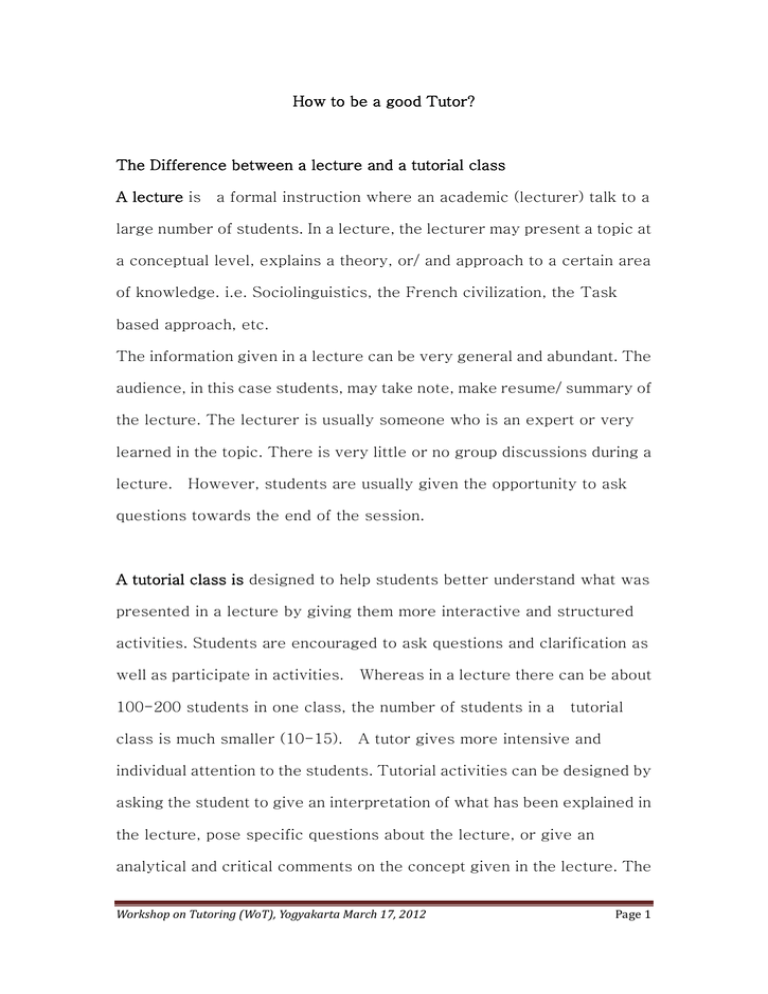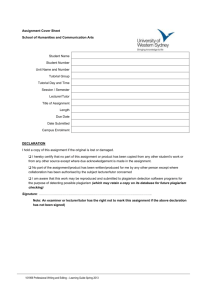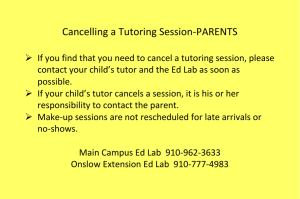How to be a good Tutor?
advertisement

How to be a good Tutor? The Difference between a lecture and a tutorial class A lecture is a formal instruction where an academic (lecturer) talk to a large number of students. In a lecture, the lecturer may present a topic at a conceptual level, explains a theory, or/ and approach to a certain area of knowledge. i.e. Sociolinguistics, the French civilization, the Task based approach, etc. The information given in a lecture can be very general and abundant. The audience, in this case students, may take note, make resume/ summary of the lecture. The lecturer is usually someone who is an expert or very learned in the topic. There is very little or no group discussions during a lecture. However, students are usually given the opportunity to ask questions towards the end of the session. A tutorial class is designed to help students better understand what was presented in a lecture by giving them more interactive and structured activities. Students are encouraged to ask questions and clarification as well as participate in activities. Whereas in a lecture there can be about 100-200 students in one class, the number of students in a class is much smaller (10-15). tutorial A tutor gives more intensive and individual attention to the students. Tutorial activities can be designed by asking the student to give an interpretation of what has been explained in the lecture, pose specific questions about the lecture, or give an analytical and critical comments on the concept given in the lecture. The Workshop on Tutoring (WoT), Yogyakarta March 17, 2012 Page 1 tutor, then will correct, reinforce, and add some detailed information using examples or/ and anecdotes. There are interactions between the tutor and the students as well as among the students through pair work & small group work. Characteristics of Tutorial classes 1. Detailed presentation of a concept, giving elaboration & examples 2. Review the content, by giving question-answer to check the understanding of the content 3. Giving a transition to additional material or module which builds on previous instructions. Who are eligible to be tutors? Teacher assistants, Ph. D students, young lecturers, and even the lecturers themselves can be tutors. How does it work in Language Classes? In language classes, tutorial can focus on practicing and using the language through speaking and writing activities. Students participate in individual and in small group activities. A good tutor should: 1. have a good command of the subject. e.i a Ph. D student who is doing a Sociolinguistic research gives a sociolinguistic tutorial, a junior lecturer who is knowledgeable about the French Civilization can give tutorials in French, etc. Workshop on Tutoring (WoT), Yogyakarta March 17, 2012 Page 2 2. be good at time management: make adequate the preparations, be punctual & on schedule, etc. 3. be active, creative, and enthusiastic about the subject matter 4. be competent in managing the class, have good presentation skills. 5. be motivated, inspiring, willing to learn, and love his/ her job! 6. have positive attitude, and open mind Are you ready to be a good tutor? Reference Mitchell, Stephen, ed. (1989). The Enlightened Heart. NY: Harper & Row. _____, trans. (1986). Letters to a Young Poet, by Rainer Maria Rilke. NY: Vintage Books. Palmer, Parker. (1999). "The Grace of Great Things: Reclaiming the Sacred in Knowing, Teaching, and Learning." In The Heart of Knowing: Spirituality in Education. Ed. Stephen Glazer. NY: Jeremy P. Tarcher/Putnam. Workshop on Tutoring (WoT), Yogyakarta March 17, 2012 Page 3


